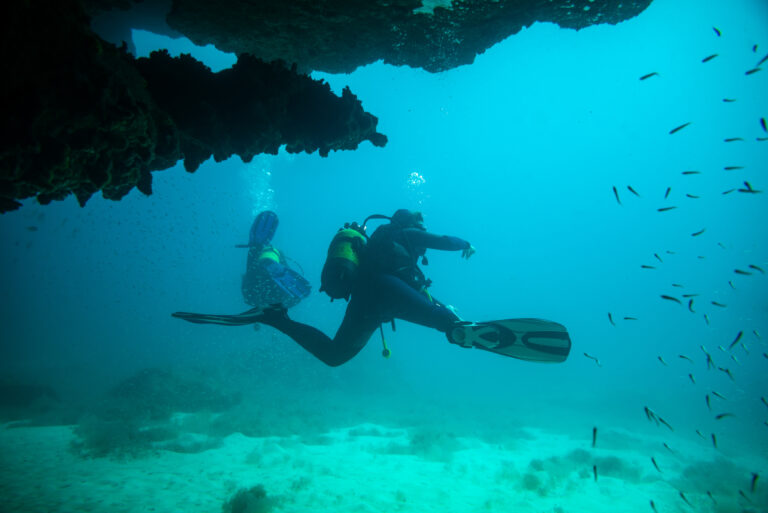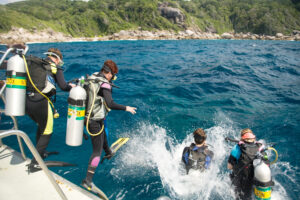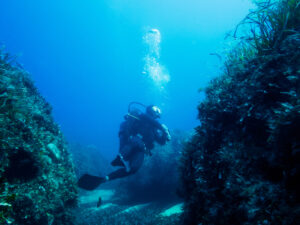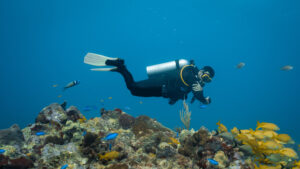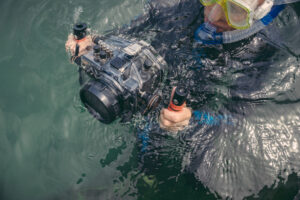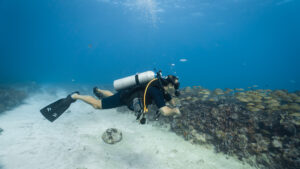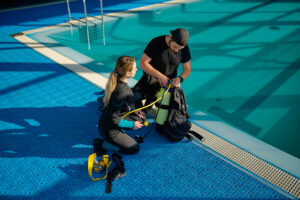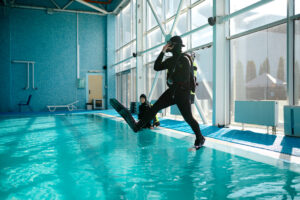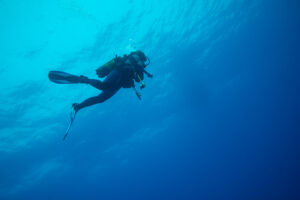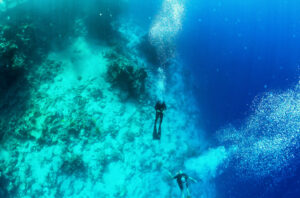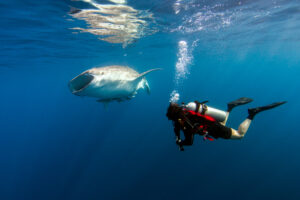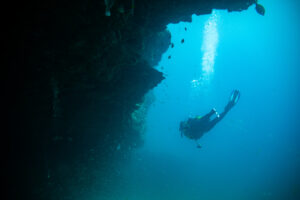What is Outgassing?
Outgassing, in the context of scuba diving, refers to the process by which dissolved gases are released from a diver’s body tissues. This phenomenon is crucial for maintaining safety during and after a dive, as improper outgassing can lead to decompression sickness (DCS), commonly known as “the bends.” When a diver ascends too quickly, the rapid decrease in pressure can cause dissolved gases, primarily nitrogen, to form bubbles within the body. These bubbles can lead to serious health complications, emphasizing the need for a thorough understanding of outgassing dynamics and proper ascent procedures.
The Science of Outgassing
Outgassing is fundamentally governed by the principles of gas solubility in liquids, notably explained by Henry’s Law. Henry’s Law states that the amount of gas dissolved in a liquid is proportional to the partial pressure of that gas above the liquid. In the context of scuba diving, this means that the deeper a diver goes, the higher the partial pressures of nitrogen and oxygen, resulting in more gas being dissolved in the body tissues.
As divers descend, the increased pressure causes nitrogen from the breathing gas to dissolve into their bloodstream and tissues. This process continues until the tissues are saturated with nitrogen at the new pressure level. Upon ascent, the ambient pressure decreases, and the dissolved nitrogen begins to come out of solution, a process known as outgassing. If the ascent is too rapid, the nitrogen can form bubbles rather than being gradually expelled through respiration, leading to the risk of decompression sickness.
The body’s response to changing pressure is a dynamic equilibrium. As pressure increases, gases are driven into solution within the body’s fluids and tissues. Conversely, as pressure decreases, these gases are released. The rate at which gases dissolve and are released depends on various factors, including the tissue’s solubility properties and the duration of exposure to increased pressures.
Factors Influencing Outgassing
Several factors influence the rate and efficiency of outgassing. One of the primary factors is depth and pressure. The deeper a diver goes, the higher the surrounding water pressure, which in turn increases the amount of gas that can dissolve in the diver’s tissues. This relationship between depth and gas absorption is a critical consideration for determining safe dive profiles and ascent rates.
Dive time is another significant factor. The longer a diver remains at depth, the more time there is for nitrogen to dissolve into the tissues. Extended bottom times increase the nitrogen load, necessitating longer and more carefully controlled ascents to allow for adequate outgassing. This relationship highlights the importance of adhering to dive tables and computer algorithms that calculate safe limits based on time and depth.
Temperature also plays a role in outgassing. Colder water can affect both the solubility of gases and the metabolic rate of the diver. Lower temperatures can lead to higher gas solubility, meaning more nitrogen is absorbed for a given depth and time. Additionally, cold temperatures can slow down the body’s circulation and metabolic processes, potentially affecting how quickly gases are transported and expelled from the tissues.
Individual variation is another factor influencing outgassing. Personal attributes such as age, fitness level, and body composition can affect how nitrogen is absorbed and released. For instance, a fit diver with good circulation may outgas more efficiently than someone with poor circulation. Body fat also affects gas absorption, as nitrogen dissolves more readily in fatty tissues, which can slow the rate of outgassing and increase the risk of decompression sickness.
Decompression Sickness and Outgassing
Decompression sickness (DCS) is a serious condition that occurs when outgassing is not properly managed. As a diver ascends and the ambient pressure decreases, nitrogen comes out of solution and must be expelled from the body. If this process is too rapid, nitrogen bubbles can form in the bloodstream and tissues, leading to a range of symptoms from mild to severe.
The symptoms of decompression sickness can vary widely. Mild cases may present as joint pain, skin rashes, or fatigue, while severe cases can involve neurological symptoms, paralysis, or even death. The onset of symptoms can occur immediately after surfacing or several hours later, making it essential for divers to monitor their condition even after leaving the water.
The prevention of decompression sickness hinges on controlled outgassing. Decompression stops are a key practice in this regard. During the ascent, divers pause at specific depths to allow the excess nitrogen to be safely expelled from the body. These stops are calculated based on dive tables or dive computers that take into account the depth and duration of the dive, ensuring that the ascent is slow and steady.
Decompression models and tables are vital tools for managing outgassing. These models, based on extensive research and empirical data, provide guidelines for safe ascent rates and decompression stops. Traditional dive tables offer a manual method for planning dives, while modern dive computers use real-time data to calculate safe profiles, adapting to the diver’s specific situation and reducing the risk of decompression sickness.
Management and Prevention Strategies
Effective management and prevention strategies are essential for safe outgassing and avoiding decompression sickness. Decompression stops are among the most critical practices. These stops, conducted at predetermined depths, allow the body to gradually expel dissolved nitrogen. By following these stops, divers can significantly reduce the risk of nitrogen bubbles forming and causing harm.
Modern dive computers have revolutionized the management of outgassing. These devices use sophisticated algorithms to track a diver’s depth, time, and ascent rate, providing real-time guidance for safe ascent profiles. Dive computers can adapt to changing conditions and individual diver characteristics, offering a personalized approach to managing decompression. This technology has made diving safer and more accessible, reducing the incidence of decompression sickness.
Best practices for safe outgassing include adhering to recommended ascent rates and using decompression stops as needed. Divers should avoid rapid ascents, which can cause nitrogen bubbles to form. Instead, a slow and controlled ascent, typically no faster than 9 meters (30 feet) per minute, is recommended. Additionally, divers should remain hydrated and well-rested, as dehydration and fatigue can negatively impact circulation and outgassing efficiency.
Physical fitness also plays a crucial role in safe outgassing. Regular exercise and maintaining a healthy weight can improve circulation and overall cardiovascular health, enhancing the body’s ability to expel nitrogen. Divers are encouraged to stay in good physical condition and be aware of their individual health factors that may affect outgassing.
Key Takeaways
Outgassing is a vital process in scuba diving, essential for preventing decompression sickness and ensuring diver safety. Understanding the science behind gas solubility, the factors influencing outgassing, and the strategies for managing it are critical for safe diving practices. Adhering to decompression stops, using modern dive computers, and maintaining good physical health are all important measures for effective outgassing and preventing the risks associated with rapid pressure changes during ascent.

